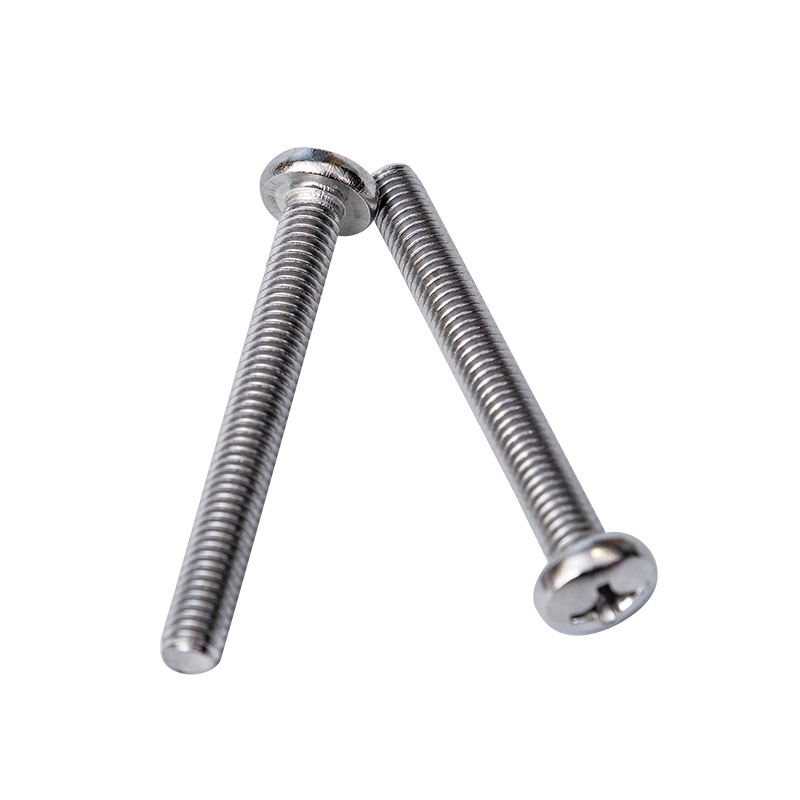Stainless steel self-tapping screws have become an essential component in modern construction and engineering projects. Known for their corrosion resistance, strength, and ease of installation, these screws are widely used across residential, commercial, and industrial construction. But what makes them so popular, and to what extent are they applied in the construction field? This article explores the reasons behind their widespread use and their applications in construction.
1. What Are Stainless Steel Self-tapping Screws?
Self-tapping screws are designed to create their own thread as they are driven into materials such as metal, wood, or plastic. Unlike conventional screws that require pre-tapped holes, self-tapping screws save time and simplify installation. When made of stainless steel, these screws gain additional benefits: resistance to corrosion, durability under high-stress conditions, and long-term reliability in various environments.
Stainless steel self-tapping screws come in multiple types, including thread-cutting, thread-forming, and hex head screws, providing flexibility for different materials and structural needs.
2. Corrosion Resistance and Durability
One of the main reasons stainless steel self-tapping screws are widely used in construction is their corrosion resistance. Construction sites are often exposed to moisture, rain, humidity, and chemicals, all of which can lead to rust and structural failure if ordinary steel screws are used. Stainless steel, particularly grades 304 and 316, offers excellent resistance to oxidation and corrosion, making it suitable for both indoor and outdoor applications, including coastal or high-humidity environments.
The durability of stainless steel screws ensures that structures remain secure over time, reducing the need for maintenance or replacement. This long-term reliability makes them particularly attractive for builders, contractors, and engineers.
3. Ease of Installation and Time Efficiency
Self-tapping screws are designed for quick and efficient installation. They eliminate the need for pre-drilling in most materials, allowing construction workers to assemble components faster. This feature is especially valuable in large-scale projects where efficiency can significantly impact overall labor costs and project timelines.
The combination of stainless steel and self-tapping design means that screws can be used in both structural and non-structural applications without compromising strength or safety. For instance, they can secure metal panels, wooden beams, or composite materials reliably, streamlining construction processes.
4. Applications in Construction
Stainless steel self-tapping screws are used in a wide variety of construction applications, including:
- Metal Roofing and Cladding: Stainless steel screws resist weathering and prevent leaks in metal roofs and siding panels.
- Wood and Timber Structures: Self-tapping screws provide strong connections for decks, furniture, and wooden frameworks.
- Drywall and Partition Installations: They allow fast and secure attachment of wallboards and partition panels.
- HVAC Systems: Used to assemble ducts, vents, and air conditioning units due to their corrosion resistance.
- Industrial and Commercial Construction: Stainless steel screws are applied in machinery mounts, electrical panels, and structural frameworks.
The versatility of these screws makes them a staple in almost every aspect of construction, from residential housing to large-scale commercial and industrial projects.
5. Safety and Load-bearing Capability
Safety is a critical concern in construction, and stainless steel self-tapping screws contribute to structural integrity. Their ability to form strong threads in metal and wood ensures a secure hold, capable of supporting significant weight and resisting vibrations. In applications such as roofing or decking, where load-bearing and wind resistance are critical, stainless steel screws provide reliable performance.
The screws’ resistance to environmental degradation also enhances safety over time, as rusted or weakened fasteners can lead to structural failures.
6. Cost-effectiveness and Longevity
While stainless steel self-tapping screws may be more expensive initially than standard carbon steel screws, their long-term benefits often outweigh the higher upfront cost. Reduced maintenance, extended lifespan, and reliability under extreme conditions make them a cost-effective solution in the construction field. The savings in repair costs and labor further justify their widespread adoption.
7. Industry Trends and Popularity
Modern construction increasingly emphasizes durability, efficiency, and safety, driving the demand for stainless steel self-tapping screws. With trends toward modular construction, metal frameworks, and sustainable building practices, these screws have become an industry standard. Contractors and engineers recognize their value in ensuring project quality while minimizing long-term risks.
Conclusion
Stainless steel self-tapping screws are indeed widely used in the construction field due to their combination of corrosion resistance, strength, ease of installation, and versatility. They play a critical role in metal roofing, wooden structures, drywall installations, HVAC systems, and various industrial applications. While the initial cost may be higher than standard screws, their durability, long-term performance, and efficiency make them indispensable in modern construction. As construction projects continue to prioritize reliability and sustainability, the use of stainless steel self-tapping screws is expected to remain prevalent and even expand further.




 русский
русский Español
Español عربى
عربى italiano
italiano
 No. 2 Bridge, Chuangxin Road, Dainan Town, Xinghua City, Taizhou City, Jiangsu Province
No. 2 Bridge, Chuangxin Road, Dainan Town, Xinghua City, Taizhou City, Jiangsu Province  +86-17315333748(Wechat)
+86-17315333748(Wechat)
 +86-17315333748(Wechat/Whatsapp)
+86-17315333748(Wechat/Whatsapp)

